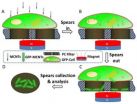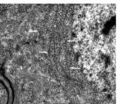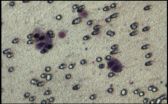(Press-News.org) Philadelphia's SugarHouse Casino opened its doors in September 2010 after years of protests from community members who feared that the casino would lead to an increase in neighborhood crime. However, a new study by researchers at Drexel University and Temple University reveals that these concerns were unfounded.
The study, which used geolocated crime data to examine changes in crime volume in the immediate neighborhood of the casino since its opening, found that crime rates in the Fishtown neighborhood of Philadelphia were largely unaffected by the introduction of the gaming establishment. The researchers found that any potential significant crime increases either did not occur or were effectively controlled by a reassignment of existing local police officers.
Entitled "A Partial Test of the Impact of a Casino on Neighborhood Crime," the study was published online on June 30 by Palgrave MacMillan's Security Journal, a peer-reviewed journal for security researchers and professionals. It is expected to run in an upcoming print issue of the journal. The full article is available at: http://www.palgrave-journals.com/sj/journal/vaop/ncurrent/full/sj201428a.html.
The study was conducted by Lallen T. Johnson, PhD, an assistant professor of criminal justice in Drexel University's College of Arts and Sciences, and Jerry H. Ratcliffe, PhD, a professor and chair of the Department of Criminal Justice at Temple University.
"The arrival of the gaming industry to the city of Philadelphia was met with much controversy and protest," said Johnson. "In particular, anti-casino community activists and organizations believed that gambling would lead to increased crime and disorder. Early discussions about the arrival of SugarHouse revolved around whether the added tax revenue would outweigh the social cost of the expected increased crime. Although reasonable concerns, our findings suggest that these negative expectations did not play out in this case."
In order to examine neighborhood-level crime-causing effects of a casino in a localized urban environment, Johnson and Ratcliffe analyzed 96 months of crime incident data to determine the extent to which crime counts changed within the Fishtown neighborhood after the casino's opening. The researchers used the data to evaluate the effect of the new casino development on four crime types – violent street felonies, vehicle crime, residential burglary and drug crime – at the neighborhood level.
"Prior studies of casinos and crime have considered the influence of gaming establishments on entire cities or counties," Johnson said. "This study, on the other hand, is the first to examine how casinos influence crime at the neighborhood level. This is particularly important considering that SugarHouse is situated near residential developments. The study also looked at whether crime was displaced to surrounding areas after opening."
Key findings include:
-Violent street felonies increased at a rate slightly greater than violence in the control area; however, this increase was not statistically significant when examined in the context of the longer trend since 2004.
-Vehicle crime decreased in the casino area; however, there was substantial displacement and the reductions in vehicle crime were not statistically significant over the long term.
-Both residential burglary and drug crime decreased in the casino area (again though, not significantly from a statistical perspective) and there were reductions in these crimes in the buffer areas.
In summary, there is no evidence that the opening and operation of the casino had a significantly detrimental effect on the immediate neighborhood in terms of violent street felonies, vehicle crime, residential burglary or drug crimes. There was evidence, however, that some vehicle crime – including vehicle thefts and thefts from vehicles – was displaced to the surrounding community.
According to the researchers, there may be a number of explanations for these findings. First, as a 24-hour facility, the casino may inadvertently attract more individuals to the area. Potential offenders may, as a result, opt to commit crime elsewhere believing that the odds of detection have increased. Second, in anticipation of the casino opening, the 26th police district commander created a special patrol district that works closely with SugarHouse management. The strategic allocation of police resources may be partially responsible for suppressing crime in the area.
"It is important to revitalize urban areas without inadvertently creating criminal opportunities," Ratcliffe said. "With no increases in violence, burglary or drug crime, we hope that the community and the police are reassured by these findings."
In spite of the relatively positive results, it would be premature to generalize the findings of this study to other neighborhoods with casinos, according to the researchers. Instead, this study shows that is important to study potential linkages between casinos and crime at multiple levels of analysis, such as neighborhood, city, county and state.
"While our findings here do not settle the debate on casino and crime linkages, they do contribute to a growing body of knowledge and suggest a need for more neighborhood-level research," said Johnson. "At the very least, the findings demonstrate that common community concerns regarding local crime conditions with the addition of a gaming establishment to the neighborhood were not borne out by the SugarHouse example."
INFORMATION:
This study had no external funding sources.
About the Researchers:
Lallen T. Johnson, PhD, is an interdisciplinary scholar with research interests at the intersection of urban studies, crime and place. His most recent research examines how structural shifts affect municipality-level violent crime hotspots within the Philadelphia Metropolitan Area. Johnson is a 2010 Graduate Research Fellow of the National Institute of Justice. His funded research has examined the travel patterns of illicit drug arrestees in the Philadelphia region to understand the relationship between drug crime and violence. He also has assessed the effectiveness of state legislation on the diversion and abuse of prescription drugs in the state of Florida. Johnson previously taught at the University of Central Florida.
Jerry H. Ratcliffe, PhD, is chair of the department of criminal justice and directs the Center for Security and Crime Science at Temple University. He previously served as a police officer with the Metropolitan Police in London, where he served for a number of years on patrol duties, in an intelligence unit, and as a member of the Diplomatic Protection Group. Ratcliffe was also a senior research analyst with the Australian Institute of Criminology, where he conducted one of the first evaluations of an intelligence-led policing operation. He has published more than 60 research articles and four books. His most recent book, "Intelligence-Led Policing," is the first book to address this emerging area of police management practice, and is on the promotion exam reading lists for the Philadelphia Police Department.
Do urban casinos increase local crime? Not in this case study
2014-07-17
ELSE PRESS RELEASES FROM THIS DATE:
University of Houston researchers create new method to draw molecules from live cells
2014-07-17
University of Houston researchers have devised a new method for extracting molecules from live cells without disrupting cell development, work that could provide new avenues for the diagnosis of cancer and other diseases.
The researchers used magnetized carbon nanotubes to extract biomolecules from live cells, allowing them to retrieve molecular information without killing the individual cells. A description of the work appears this week in the Proceedings of the National Academy of Sciences.
Most current methods of identifying intracellular information result ...
Study: Hour-long home coaching decreases re-admission, costs for Medicare patients
2014-07-17
CLEVELAND -- A new study in Journal of General Internal Medicine reports that an hour-long educational coaching session and two or three follow-up phone calls after a hospital stay reduced re-admission odds by 39 percent among Medicare patients. The study also found that the average cost of care was reduced by $3,700 per patient for those patients who received the education session versus those who did not.
This study is the first to report on a more comprehensive picture of healthcare use in the six months following the patient-centered coaching, called Care Transitions ...
Splice-switching oligonucleotide therapeutics is new method for editing gene transcript
2014-07-17
Splice-Switching Oligonucleotide Therapeutics Is Promising New Method for Editing Gene Transcripts
New Rochelle, NY, July 17, 2014—In splice-switching, an innovative therapeutic approach, targeted oligonucleotide drugs alter the editing of a gene transcript to produce the desired form of a protein. Developments in this rapidly advancing field have already led to promising treatments for such diseases as Duchenne Muscular Dystrophy and spinal muscular atrophy, as described in an article in Human Gene Therapy, a peer-reviewed journal from Mary Ann Liebert, Inc., publishers. ...
Preventing foodborne illness, naturally -- with cinnamon
2014-07-17
PULLMAN, Wash. – Seeking ways to prevent some of the most serious foodborne illnesses caused by pathogenic bacteria, two Washington State University scientists have found promise in an ancient but common cooking spice: cinnamon.
Recent findings published in Food Control journal online suggest Cinnamomum cassia oil can work effectively as a natural antibacterial agent in the food industry. The study results add to a body of knowledge that will help improve food safety and reduce or eliminate cases of food poisoning and related deaths.
In the study, the essential oil ...
Anti-tank missile detector joins the fight against malaria
2014-07-17
State-of-the-art military hardware could soon fight malaria, one of the most deadly diseases on the planet.
Researchers at Monash University and the University of Melbourne have used an anti-tank Javelin missile detector, more commonly used in warfare to detect the enemy, in a new test to rapidly identify malaria parasites in blood.
Scientists say the novel idea, published in the journal Analysis, could set a new gold standard for malaria testing.
The technique is based on Fourier Transform Infrared (FITR) spectroscopy, which provides information on how molecules ...
Acupuncture and moxibustion reduces neuronal edema in Alzheimer's disease rats
2014-07-17
Aberrant Wnt signaling is possibly related to the pathological changes in Alzheimer's disease (AD). Axin and β-catenin protein is closely related to Wnt signaling. Zhou Hua and his team, Hubei University of Chinese Medicine, China confirmed that moxibustion or electroacupuncture, or both, at Baihui (GV20) and Shenshu (BL23) acupoints decreased axin protein expression, increased β-catenin protein expression, and alleviated neuronal cytoplasmic edema. These findings suggest that the mechanism underlying the neuroprotective effect of acupuncture in AD is associated ...
Who are responsible for protecting against neuron and synapse injury in immature rats?
2014-07-17
Fructose-1,6-diphosphate is a metabolic intermediate that promotes cell metabolism. Whether it can alleviate hippocampal neuronal injury caused by febrile convulsion remains unclear. Dr. Jianping Zhou, the Second Affiliated Hospital, Medical College of Xi'an Jiaotong University, China and his team established a repetitive febrile convulsion model in rats aged 21 days, equivalent to 3 years in humans, intraperitoneally administered fructose-1,6-diphosphate at 1,000 mg/kg into the rat model. Results showed that high-dose fructose-1,6-diphosphate reduced mitochondrial ...
Chemokine receptor 4 gene silencing blocks neuroblastoma metastasis in vitro
2014-07-17
Chemokine receptor 4 is a chemokine receptor that participates in tumor occurrence, growth and metastasis in vitro and its expression is upregulated during neuroblastoma metastasis. Dr. Xin Chen, the Affiliated Hospital of Qingdao University, China successfully constructed chemokine receptor 4 sequence-specific small interfering RNA (siRNA) plasmids, transfected into SH-SY5Y cells and found that down-regulation of chemokine receptor 4 can inhibit in vitro invasion of neuroblastoma. This paper was published in Neural Regeneration Research (Vol. 9, No. 10, 2014).
Article: ...
Intrathecal bumetanide has analgesic effects through inhibition of NKCC1
2014-07-17
Accumulating evidence has demonstrated that the sodium-potassium-chloride co-transporter 1 (NKCC1) and potassium-chloride co-transporter 2 (KCC2) have a role in the modulation of pain transmission at the spinal level through chloride regulation in the pain pathway and by effecting neuronal excitability and pain sensitization. Dr. Yanbing He Zhujiang Hospital, Southern Medical University, China and his team found that intrathecal bumetanide could increase NKCC1 expression and decrease KCC2 expression in spinal cord neurons of rats with incisional pain. The authors presumed ...
Attenuated inhibition of neuron membrane excitability contributes to childhood depression
2014-07-17
Accumulating evidence suggests that the nucleus accumbens, which is involved in mechanisms of reward and addiction, plays a role in the pathogenesis of depression and in the action of antidepressants. Dandan Liu and her team, Bio-X Institute, Shanghai Jiao Tong University, China for the first time using electrophysiological method studied the signaling transduction pathway mediated by dopamine D2-like receptor in the medium spiny neurons in the core of the nucleus accumbens in the juvenile Wistar Kyoto rat model of depression. They concluded that impaired inhibition of ...








